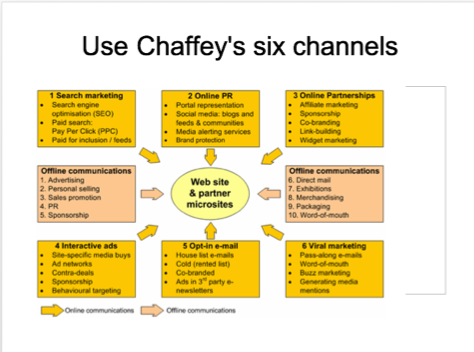Halo Top:
‘Ice cream you can feel good about eating.’
Name: Elly Sykes
Module: Digital Marketing
Tutor: Dr. Chitharanjandas Chinnapaka
Word Count: 542 words
Date: 13th December 2018
Introduction
Halo Top was founded in 2011, the product is aimed at the health conscious consumers as the ice cream only has 280-360 calories per tub (SimilarWeb, 2018). Halo top sold 3 million units since its launch in the UK last summer. Coinciding with the start of the healthy eating trend. This popular trend has shaped the current food industry and created new products such as Halo Top (The Guardian, 2018).
Target Market
The purpose of the Halo Top website is to promote brand building. There is no purchasing element, therefore it relies on being interactive and eye catching (Chaffey & Ellis Chadwick, 2016). Halo Top ensures their designs are age appropriate through the use of packaging, illustrations and font styles, which are aimed at a younger target audience (Hemsley, 2016). The approach to understanding the millennials has a direct impact upon how businesses such as Halo Top target specific customer segments, so using social media as a link to their website is a necessity (Young & Hinesly, 2012). The growing consumer power in this digital age causes a rise in the use of social media. This is exemplified by Halo Top’s use of Instagram and Facebook links on their website. A key component to a successful brand (Labrecque et al, 2013).
Halo Top Total Website Visits (last 6 months)
SimilarWeb (2018)
Competitors
Ben & Jerries (Moo-Phoria) and Breyers are comparable health conscious competitors. Ben & Jerries is a more child targeted ice cream, encapsulated by their fun and interactive website. Whereas, Breyers ice cream seems to be aimed at an older target audience. The use of the words “on your kid’s toys” in Breyers advertisement strongly suggests is it targeted at an age range of persons with children. Both websites mention the number of calories in the ice cream, appealing to the health conscious customer. Ben & Jerries website focuses on the instant delivery, supermarket delivery and scoop shops rather than details of the product itself. Promoting a quick and simple way to purchase the ice cream. On the contrary, Halo Top and Breyers’ main focus is on the ice cream and its contents. Additional information regarding purchase is made available on another webpage (Ben & Jerrys, 2018 & Breyers, 2018).
(https://www.benjerry.co.uk/flavours/moophoria)
(https://www.breyers.com/us/en)
Personas
Customer Journey’s & Touchpoints
Customer pathway: Finding nearest location to purchase product
Customer pathway: Searching for a recipe
One important point that differs between the two customers journeys’- is that when the first customer is purchasing the product they are more likely to use desktop page to establish further detail about the Halo Top product. Whereas, the other customer is more likely to use their phone to search recipes, due to speed and convenience. Furthermore, neither customer is able to use chat support or a mobile app as Halo Top does not offer this service. The advantages of offering this support is that there are lower interaction costs. Although, providing a support service would enable a better relationship between the customers and organisation (Cole, 2017).
Evaluation
Using Chaffeys 6 channels in addition to the customer journey map, it can be seen that Halo Top use a significant amount of Online PR. Particularly; the social media, blogs, feeds and communities- meaning the majority of the communication is online (Chaffey, 2013).

(Chaffey, 2013).
Furthermore, using the AIDA model to analyse the effectiveness of their website, Halo Top can be seen to focus more on ‘ Informing’ the customer rather than the ‘Delivery’. This is because there is no mode of payment or customer support on the website (Simeon, 1999).

(Simeon, 1999)
References
Ben & Jerry’s. (2018) ‘Moophoria’ [Online] https://www.benjerry.co.uk/flavours/moophoria [Accessed 28th November]
Breyers. (2018) ‘Breyers’ [Online] https://www.breyers.com/us/en [Accessed 28th November]
Chaffey, D. (2013) eMarketing excellence: planning and optimizing your digital marketing, 4th Ed, London and New York: Routeledge.
Cole, N. (2017) The power of live chat. [Online] https://www.inc.com/nicolas-cole/the-power-of-live-chat-5-surprising-statistics-that-show-how-consumers-want-thei.html [Accessed 12th December]
Grohmann, B. (2014) Communicating brand gender through type fonts. Journal of Marketing Communications, Vol, 22, No, 1, p403-418.
Halo Top. (2018) ‘Ultra low-calorie ice-cream is flying off the shelves- but can it really beat Ben & Jerry’s?’ [Online] https://www.theguardian.com/food/2018/aug/23/ultra-low-calorie-ice-cream-is-flying-off-the-shelves-but-can-it-really-beat-ben-jerrys [Accessed 26th November 2018]
Hemsley, S. (2016) ‘Brands need to ensure their designs are age- agnostic.‘ [Online] https://www.marketingweek.com/2016/03/24/appeal-to-consumers-across-generations-by-adopting-an-age-agnostic-approach-to-design/ [Accessed 12th December]
Labrecque, L., Esche, J., Mathwick, C., Novak, T. & Hofacker, C. (2013) Consumer power: Evolution in the digital age. Journal of interactive marketing, Vol. 27, No. 4, p257-269
Roblyn Simeon, (1999) “Evaluating domestic and international Web‐site strategies”. Internet Research, Vol. 9, No. 4, pp.297-30
SimilarWeb. (2018) ‘Market Intelligence Solutions’ [Online] https://www.similarweb.com [Accessed 28th November]
Young, A. & Hinesly, M. (2012) “Identifying Millennials’ key influencers from early childhood: insights into current consumer preference”. Journal of Consumer Marketing, Vol. 29, No.2, p146-159
Appendices
Appendix 1
Appendix 2











